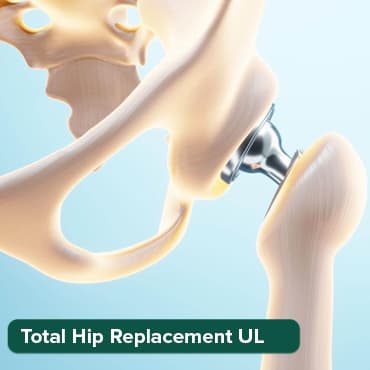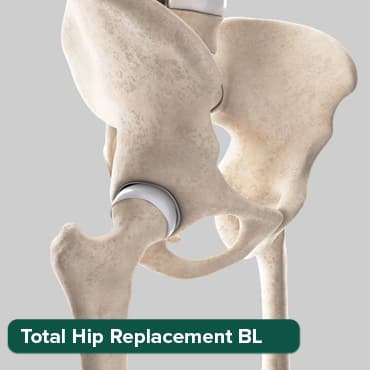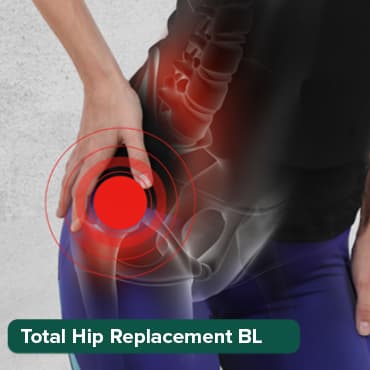
The Importance of Early Osteoporosis Detection
08 Sep, 2023
 Healthtrip Team
Healthtrip TeamIntroduction
In the realm of health concerns, certain adversaries often lurk unnoticed until they strike with crippling force. One such stealthy assailant is osteoporosis – a condition characterized by weakened bones, increasing vulnerability to fractures, and a diminished quality of life. While osteoporosis may initially be silent, its impact can be deafening. The significance of early osteoporosis detection cannot be overstated, as it holds the key to preserving skeletal health, preventing fractures, and ensuring a vibrant and active lifestyle.
1. Unmasking the Quiet Culprit
a. Osteoporosis: The Silent Disease
Osteoporosis is often referred to as a "silent disease" due to its concealed nature. Unlike many other health issues that manifest with prominent symptoms, osteoporosis can develop silently for years, making it challenging to detect without proactive screening. The gradual loss of bone density weakens the skeletal structure, transforming bones from pillars of strength into fragile, brittle shells.
Transform Your Beauty, Boost Your Confidence
Find the right cosmetic procedure for your needs.

We specialize in a wide range of cosmetic procedures

b. Progression of Osteoporosis: Risks and Consequences
As the disease progresses, the risk of fractures skyrockets. Fractures not only inflict physical agony but can also result in reduced mobility, impaired functionality, and even life-altering consequences, especially in the elderly. This makes early detection pivotal to avoid the aftermath of fractures and the diminished quality of life they entail.
2. The Power of Early Detection
a. Intercepting the Threat: Early Osteoporosis Detection
Imagine having the ability to intercept a threat before it fully materializes – that is precisely what early osteoporosis detection offers. By identifying bone density loss in its initial stages, medical professionals can intervene with targeted strategies to slow down the progression of the disease. Timely detection enables the implementation of lifestyle changes, medication, and preventive measures that help individuals maintain bone health.
b. Bone Density Testing: The DEXA Scan
One of the most common methods for detecting osteoporosis is a bone density test, commonly known as a DEXA (dual-energy x-ray absorptiometry) scan. This non-invasive procedure measures bone mineral density and provides insights into an individual's fracture risk. When performed regularly, DEXA scans allow for close monitoring of bone health, making it possible to catch any deviations from the norm and address them promptly.
3. Nurturing Strong Bones Through Awareness
a. Transforming Public Health: Awareness and Screenings
Early osteoporosis detection goes beyond the individual level; it has the potential to transform public health outcomes. By raising awareness about the significance of bone health and encouraging regular screenings, we can collectively work towards minimizing the prevalence of osteoporosis-related fractures. Informed individuals are more likely to make proactive decisions to protect their skeletal well-being, leading to healthier communities.
b. Empowering Individuals: Education and Resources
Educational initiatives, campaigns, and accessible resources play a pivotal role in fostering a culture of bone health awareness. Empowering individuals with knowledge about risk factors, lifestyle practices that promote strong bones, and available medical interventions arms them with the tools they need to take charge of their health journey.
4. Empowering Aging Gracefully
a. Age Gracefully: The Role of Early Detection
Aging is an inevitable facet of life, but its journey need not be laden with limitations. Osteoporosis doesn't discriminate based on age, and its implications can be profoundly felt as the years advance. However, early detection can empower individuals to age gracefully and maintain an active lifestyle.
Most popular procedures in India
Total Hip Replacemen
Upto 80% off
90% Rated
Satisfactory

Total Hip Replacemen
Upto 80% off
90% Rated
Satisfactory

Total Hip Replacemen
Upto 80% off
90% Rated
Satisfactory

ANGIOGRAM
Upto 80% off
90% Rated
Satisfactory

ASD Closure
Upto 80% off
90% Rated
Satisfactory

b. Consider the story of an individual who, through early osteoporosis detection, was able to implement personalized exercise
Consider the story of an individual who, through early osteoporosis detection, was able to implement personalized exercise routines, dietary changes, and medical interventions. By taking control of their bone health, this individual shattered the stereotype of aging as a time of fragility. Instead, they embraced their golden years with vitality, participating in activities they love without the constant fear of fractures.
5. Beyond Physical Health: The Psychological Impact
a. Psychological Toll: Fear of Fractures
The toll of osteoporosis extends beyond the physical realm; its psychological impact can be equally daunting. The fear of fractures can lead to heightened anxiety and reduced confidence, forcing individuals to curtail their daily activities for fear of injury. This not only hampers their enjoyment of life but also contributes to a sense of isolation and dependency.
b. Liberation through Detection: Crafting Strategies
Early osteoporosis detection provides a lifeline to escape this cycle of apprehension. By working with healthcare professionals, individuals can craft personalized strategies to mitigate their fracture risk. As their bone health improves, so does their mental well-being, fostering a sense of liberation that comes from conquering one's health challenges.
6. A Call to Action
The importance of early osteoporosis detection reverberates through the corridors of healthcare, society, and individual lives. It's a call to action for individuals to prioritize their bone health, for healthcare systems to integrate regular screenings into wellness protocols, and for communities to champion awareness campaigns that drive change.
Conclusion
In conclusion, the narrative of osteoporosis need not be one of despair and fragility. With early detection, it transforms into a story of empowerment, resilience, and active living. By understanding the significance of early detection and embracing preventive measures, individuals can safeguard their bones and embrace life's adventures with open arms. Let us embark on this journey to stronger bones together – a journey that promises vitality, freedom, and a future unburdened by the shackles of osteoporosis.
Wellness Treatment
Give yourself the time to relax
Lowest Prices Guaranteed!

Lowest Prices Guaranteed!
